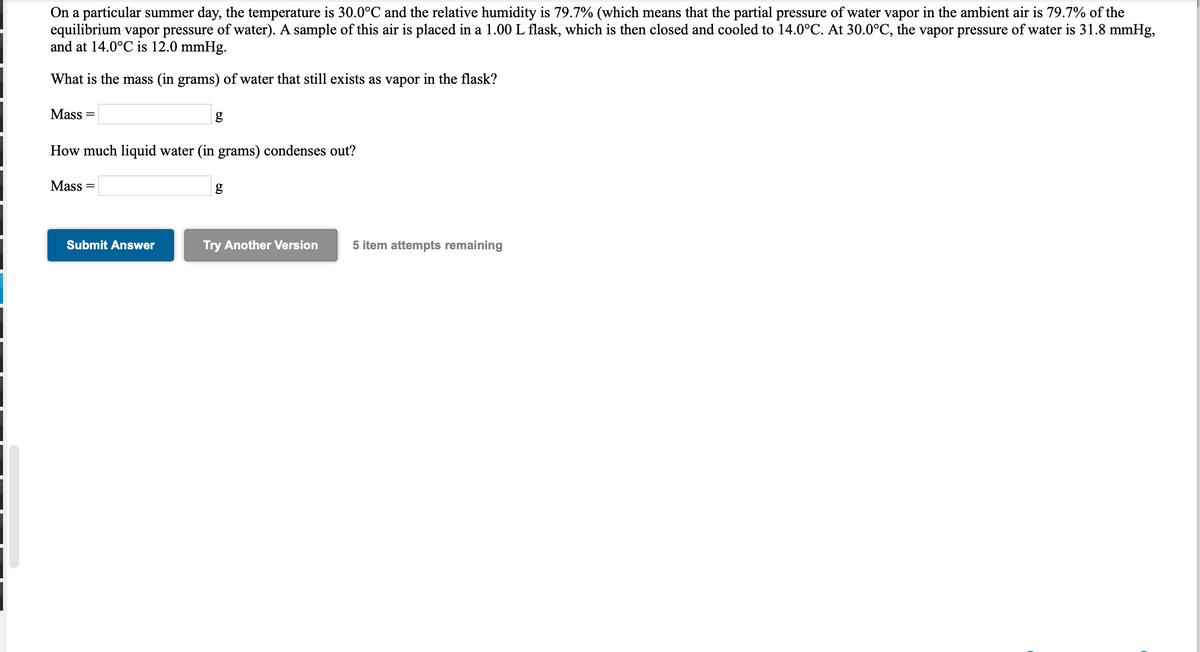On a particular summer day, the temperature is 30.0°C and the relative humidity is 79.7% (which means that the partial pressure of water vapor in the ambient air is 79.7% of the equilibrium vapor pressure of water). A sample of this air is placed in a 1.00 L flask, which is then closed and cooled to 14.0°C. At 30.0°C, the vapor pressure of water is 31.8 mmHg, and at 14.0°C is 12.0 mmHg. What is the mass (in grams) of water that still exists as vapor in the flask? Mass = g How much liquid water (in grams) condenses out? Mass = g Submit Answer Try Another Version 5 item attempts remaining
States of Matter
The substance that constitutes everything in the universe is known as matter. Matter comprises atoms which in turn are composed of electrons, protons, and neutrons. Different atoms combine together to give rise to molecules that act as a foundation for all kinds of substances. There are five states of matter based on their energies of attraction, namely solid, liquid, gases, plasma, and BEC (Bose-Einstein condensates).
Chemical Reactions and Equations
When a chemical species is transformed into another chemical species it is said to have undergone a chemical reaction. It consists of breaking existing bonds and forming new bonds by changing the position of electrons. These reactions are best explained using a chemical equation.

The expression of ideal gas equation is shown below:
PV = nRT
Where;
P = pressure
V = volume
n = moles
T = temperature
Conversion of pressure of H2O mmHg to atm is shown below:
The calculation of moles at 300C is shown below:
Step by step
Solved in 6 steps









